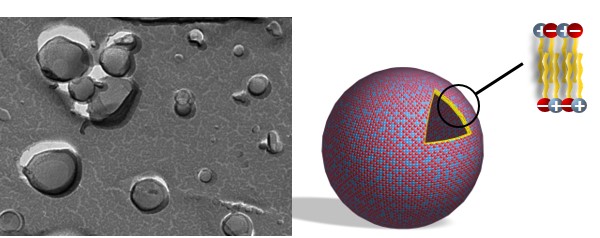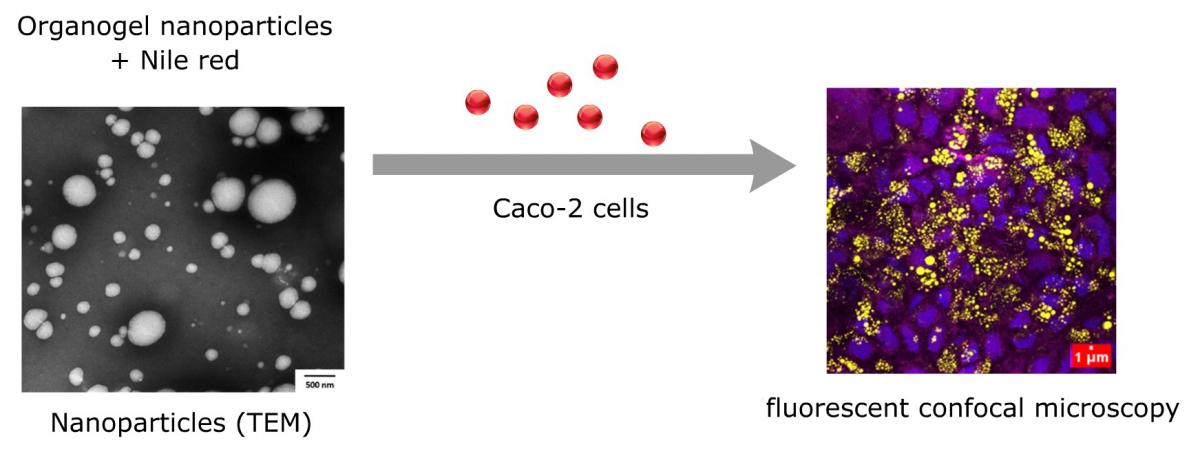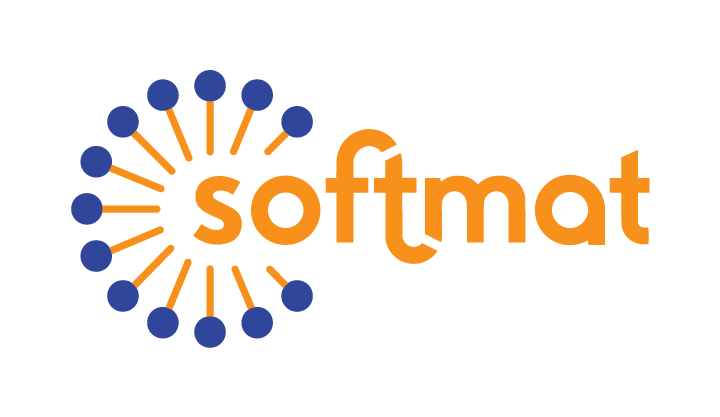Formulation of OMSs for drug delivery
This theme relates to the formulation of vectorization systems in the framework of sustainable development, according to an original approach of "green" galenic. The challenge is to design vectorization systems that are versatile and therefore easily adaptable to the active ingredient to be transported, as well as to the biological target.
Microscopie électronique de vésicules catanioniques et mode d’assemblage
In this context, we take benefit of the unique properties of catanionic surfactants, which have the ability to spontaneously form vesicles in water, to elaborate new drug delivery systems. The understanding of the mechanism of interaction between vectors and cells, as well as the encapsulated drug release mode is one of our main concerns, so we can adapt the vector to the desired application.
We also develop colloidal aqueous dispersions consisting of organogel nanoparticles. These vectors, based on vegetable oils and natural gelling agents, fit perfectly into our "green" galenic approach, and are particularly suitable for encapsulating hydrophobic active substances for oral delivery. Recently we have demonstrated using a fluorescence probe (red Nile) the rapid internalization of these vectors by Caco-2 cells predictive of intestinal absorption.
Internalisation de nanoparticules d’organogel dans une culture de cellules Caco-2
Our work also focuses on the development of alternative formulations to the use of controversial substances, such as palm oil, both for the cosmetic and food areas. For instance, the Substipalm project, carried out in collaboration with companies from the Occitanie region, has made remarkable progress in the field with the development of an innovative formulation of a palm oil substitute. An application for approval is underway with the National Agency for Food Safety, Environment and Labor (ANSES).

Fruits du palmier à huile (© aromatic.se)
Mauroy C.; Castagnos P.; Orio J.; Blache M.C.; Rico-Lattes I.; Teissié J.; Rols M.P.; Blanzat M.
Mol. Pharmaceutics, 2015, 12, 103-110, DOI
Roig, F.; Blanzat, M.; Solans, C.; Esquena, J.; García-Celma, M. J.
Colloids Surf. B Biointerfaces, 2018, 164, 218-223, DOI
Martin B.; Brouillet F.; Franceschi S.; Perez E.
AAPS PharmSciTech, 2017, 18, 1261-1269, DOI
>> Green microparticles based on a chitosan/lactobionic acid/linoleic acid association. Characterisation and evaluation as a new carrier system for cosmetics
Chaouat C.; Balayssac S.; Malet-Martino M.; Belaubre F.; Questel E.; Schmitt A.-M.; S. Poigny S.; Franceschi S.; Perez E.
Journal of Microencapsulation, 2017, 34, 162-170, DOI


